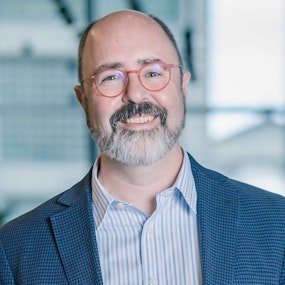ROBERT JOHNSON:
This is the award-winning Public Health Review Morning Edition for Tuesday, April 23, 2024. I'm Robert Johnson. Now, today's news from the Association of State and Territorial Health Officials.
DIA GAINOR:
EMS is an early detector have issues related to health in the community by virtue of the urgency that prompted someone to call 911.
JOHNSON:
But challenges delivering those services are starting to emerge set in motion when the end of federal support, decades ago, left local jurisdictions to pay for and manage the system. This is Dia Gainor, executive director of the National Association of State EMS Officials.
GAINOR:
From 1973 through 1981, the federal government made a significant investment in EMS, the purchase of ambulances, training of EMTs and paramedics, communications capabilities to do radio consultations with receiving hospitals, that abruptly ended in the early 1980s.
JOHNSON:
Gainor says among the concerns the fact that so many EMS responders are volunteers.
GAINOR:
There is an undue reliance on volunteers in EMS. And this is part of what is eroding from the manpower and workforce base, and also can lead to less clinical sophistication being available, especially in rural areas.
JOHNSON:
She's also worried about reimbursement and inequities in reimbursement, urging public health officials to educate themselves about EMS challenges in their communities.
GAINOR:
I would want any public health official to be on a first name basis with the state EMS director associated with their jurisdiction whether they're a state public health official or a local public health official, and understanding the scope and nature of the challenges the state EMS system bases.
JOHNSON:
Gainer believes EMS could provide public health with more data, what she calls an untapped resource. You can read her comments and a new article on the Route Fifty news website. There's a link in the show notes.
In other news, national experts will gather online Thursday at 10am Eastern time to discuss avian flu, ASTHO will convene the symposium moderated by CEO, Dr. Joseph Kanter. He'll be joined by other ASTHO experts and representatives of the Infectious Diseases Society of America, the Council of State and Territorial Epidemiologists, and their federal partners. Learn about the disease, the outbreak and possible responses anyone can listen in. There's a link to the meeting page in the show notes.
Also, today, we hear a lot about telling stories using data. But what does that mean? Mike Cisneros is a data storyteller,
MIKE CISNEROS:
Data storytelling is nothing more than making a conscious decision to communicate in the engaging, memorable and relatable way that we've always communicated. The only difference is that data is not dictating the story, but it's helping us to see what that story should be.
JOHNSON:
If it's that simple, then why don't we do it? Cisneros says it's because we focus a little too much on data analysis.
CISNEROS:
We often spend so much time on our analysis that we run out of time to think about, well, how should this actually be presented. And then at the same time, our audience isn't going to understand the importance of what we found.
JOHNSON:
Cisneros says public health absolutely would benefit from better data storytelling.
CISNEROS:
If the work that you're doing is predicated on the idea of making people's lives better, safer, healthier; it stands to reason that we should take a human-centered approach to the way that we communicate our findings. Since that's the best way to move people and inspire them to take action.
JOHNSON:
ASTHO has created several data stories, see how it's done by clicking the link in the show notes.
Finally, this morning, as if public health doesn't have enough to worry about superbugs are causing problems. Epidemiologist, Brianna Scott, writes about them in a new ASTHO blog article.
BRIANNA SCOTT:
So, this upcoming blog really focuses on the urgent issue of combating multi-drug resistant organisms, also known as MDROs.
JOHNSON:
Scott works at the Long Beach Health Department. She says these organisms are encouraged by climate change and the overuse of antibiotics, but adds they can be defeated with a health equity approach.
SCOTT:
There's a big need for a comprehensive approach when we are addressing this issue, and that we really want to consider health factors such as healthcare access, community engagement, and innovative research can be used to address these challenges.
JOHNSON:
Scott wants public health leaders to use her blog article as a guide to the steps it'll take to defeat superbugs.
SCOTT:
I'm hoping this really sparks conversation and the development of recommendations, and that any strategies that we do implement together, we can really work towards a future where the burden of drug resistant infections is effectively addressed and health equity is also prioritized.
JOHNSON:
You can read Scott's article using the link in the show notes.
Before we go a reminder also to follow this newscast on your podcast player and connect with ASTHO on social media. We're on LinkedIn, Twitter, and Facebook.
That'll do it for today. We're back tomorrow morning with more ASTHO news and information. I'm Robert Johnson. You're listening to the award-winning Public Health Review Morning Edition. Have a great day.







